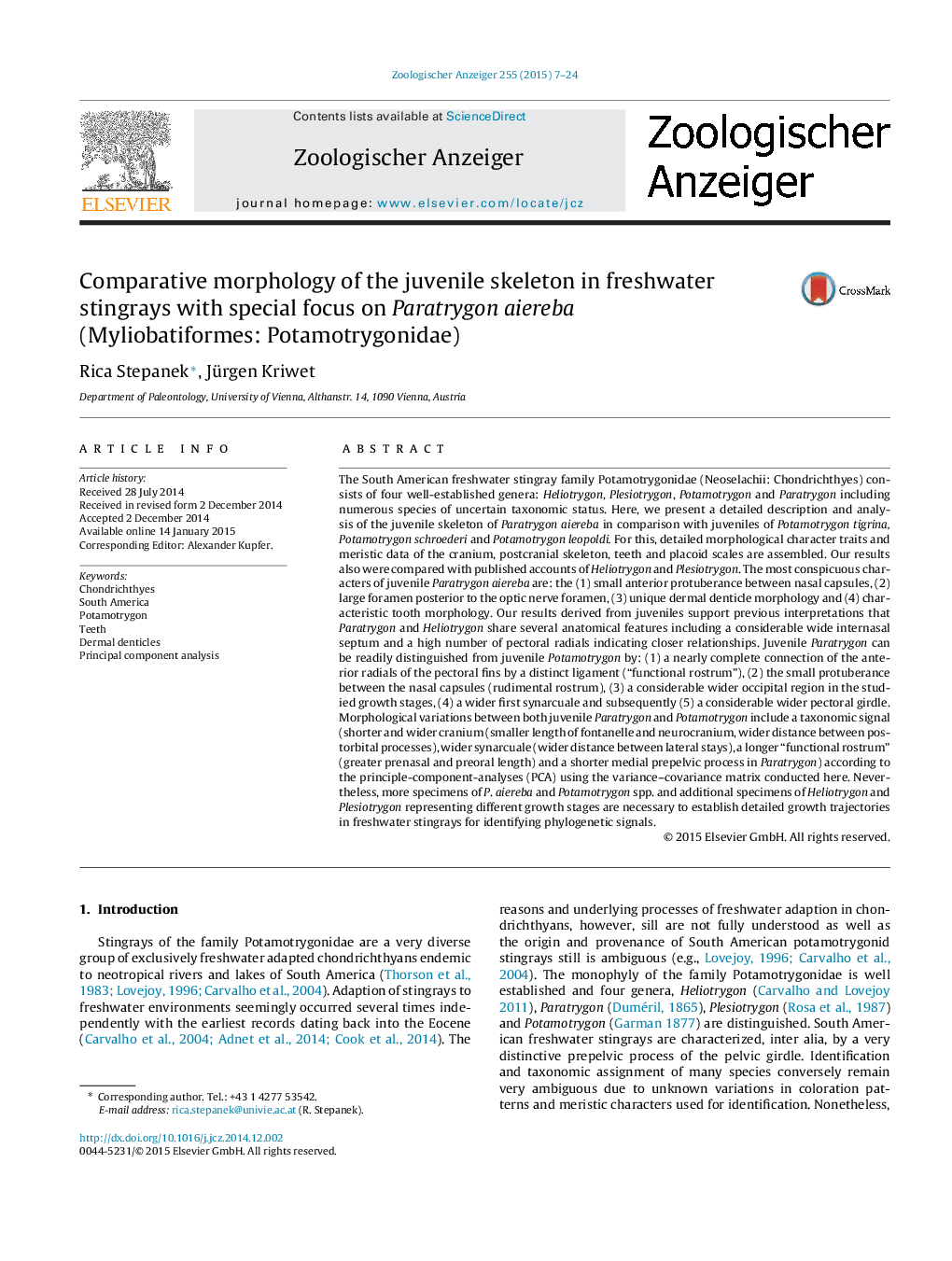| کد مقاله | کد نشریه | سال انتشار | مقاله انگلیسی | نسخه تمام متن |
|---|---|---|---|---|
| 2790595 | 1568620 | 2015 | 18 صفحه PDF | دانلود رایگان |

The South American freshwater stingray family Potamotrygonidae (Neoselachii: Chondrichthyes) consists of four well-established genera: Heliotrygon, Plesiotrygon, Potamotrygon and Paratrygon including numerous species of uncertain taxonomic status. Here, we present a detailed description and analysis of the juvenile skeleton of Paratrygon aiereba in comparison with juveniles of Potamotrygon tigrina, Potamotrygon schroederi and Potamotrygon leopoldi. For this, detailed morphological character traits and meristic data of the cranium, postcranial skeleton, teeth and placoid scales are assembled. Our results also were compared with published accounts of Heliotrygon and Plesiotrygon. The most conspicuous characters of juvenile Paratrygon aiereba are: the (1) small anterior protuberance between nasal capsules, (2) large foramen posterior to the optic nerve foramen, (3) unique dermal denticle morphology and (4) characteristic tooth morphology. Our results derived from juveniles support previous interpretations that Paratrygon and Heliotrygon share several anatomical features including a considerable wide internasal septum and a high number of pectoral radials indicating closer relationships. Juvenile Paratrygon can be readily distinguished from juvenile Potamotrygon by: (1) a nearly complete connection of the anterior radials of the pectoral fins by a distinct ligament (“functional rostrum”), (2) the small protuberance between the nasal capsules (rudimental rostrum), (3) a considerable wider occipital region in the studied growth stages, (4) a wider first synarcuale and subsequently (5) a considerable wider pectoral girdle. Morphological variations between both juvenile Paratrygon and Potamotrygon include a taxonomic signal (shorter and wider cranium (smaller length of fontanelle and neurocranium, wider distance between postorbital processes), wider synarcuale (wider distance between lateral stays), a longer “functional rostrum” (greater prenasal and preoral length) and a shorter medial prepelvic process in Paratrygon) according to the principle-component-analyses (PCA) using the variance–covariance matrix conducted here. Nevertheless, more specimens of P. aiereba and Potamotrygon spp. and additional specimens of Heliotrygon and Plesiotrygon representing different growth stages are necessary to establish detailed growth trajectories in freshwater stingrays for identifying phylogenetic signals.
Journal: Zoologischer Anzeiger - A Journal of Comparative Zoology - Volume 255, March 2015, Pages 7–24